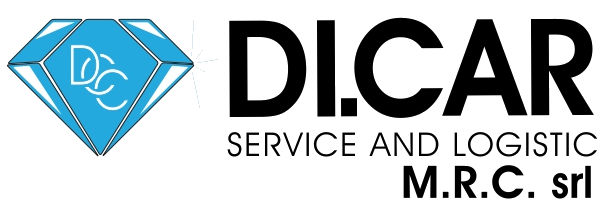Cash App Money Transfer: What It Is, How to Use It
Agosto 11, 2023Provide the recipient’s email address, phone number, or $Cashtag, enter what the payment is for, and click Pay again. The process is fast and easy, making this an excellent tool for splitting bills or sending money to friends and family. You can add funds to your Cash App account using a debit card linked to an existing bank account. You can also transfer funds from your Cash App account to your bank account, a process that usually takes two to three days. Cash App charges $2 per ATM withdrawal made with a Cash Card (on top of any fees the ATM owner charges). However, if you’ve received at least $300 in direct deposit payments into your account, the company will reimburse three ATM fees per 31 days (up to $7 per withdrawal).
- You can use an Apple Cash credit card or debit card to fund a payment.
- In addition, the ATM owner may charge a separate fee for ATM use.
- In 2021, a law was created that aimed to revise tax reporting for P2P apps like Cash App, Venmo and PayPal.
- Neither ZDNET nor the author are compensated for these independent reviews.
Transfers to a bank account generally take between one and three days to clear. There’s an option for an instant transfer, which thermometer app download is processed in 30 minutes or less. Those are charged an additional 1.5% transaction fee (minimum $0.25, maximum $15).
How do I send and receive money with Cash App?
This is a fairly standard fee compared with other money transfer apps; Venmo, for example, also charges 3% to send money with a linked credit card. To avoid this fee altogether, use your linked bank account or the funds in your Cash App account to send money. While online payment services make sending people money as simple as a few taps on your phone, consumers should consider fees and security risks, as well as how quickly they need to transfer funds. Most services will take 1-3 days to complete transfers, while offering faster processing for an additional fee. If you have a debit card or bank account linked to your Cash App, you won’t pay any fees to receive or send money. But if you’re sending money with a credit card, there’s a 3% fee per transaction.
- Cash App typically takes between one and three days to transfer funds.
- That said, you can make all your Venmo transactions private by default.
- And we pore over customer reviews to find out what matters to real people who already own and use the products and services we’re assessing.
- This scammer is scamming gods knows how many people out of £230 or more, and cashapp is ENABLING IT.
- When you’re ready to transfer money from Cash App to your bank account, you can initiate a deposit through the app or your browser.
As its name would suggest, Cash App is primarily a smartphone app (available on the App Store and Google Play). It’s also accessible through browsers like Chrome and Safari. The Cash Boost grants users discounts in a long list of stores including (but not limited to) Shake Shack, Chipotle, and various favorite cafes.
Data Linked to You
This is similar to services like Venmo and PayPal, which also allow you to link a bank account to send money; you can also hold any received funds in the app until you’re ready to withdraw them. Standard transfers from a Cash App balance to a linked bank account are fee-free, but Cash App charges a small fee for instant transfers. In addition, the ATM owner may charge a separate fee for ATM use. For users who receive direct deposits of at least $300 each month, Cash App reimburses ATM fees, including one third-party ATM fee per 31-day period. Each receipt of qualifying direct deposits of $300 or more within a month extends your ATM fee reimbursements for an additional 31 days.
The investing feature lets users invest in stocks for as little as $1. This is done by buying a portion of a stock, called a fractional share. Consumers <--more--> can also buy, sell or transfer bitcoin through the app. Owned by PayPal, Venmo is the third most popular finance app in the App Store.
Tired of falling in line in ATMs and banks? Experience a reliable and fast money-involved transaction anytime, anywhere!
However, there are significant differences in how Cash App works compared to these other apps, specifically regarding how money in your account is protected and insured. If you use Cash App as part of your business, you’ll have to report those earnings for goods and services if those come to $600 or more. Cash App is one of several popular peer-to-peer transaction services, similar in many ways to PayPal, Venmo, and others. Unless you really trust the person you’re working with, advance payments put you at risk, and recovering your money can be difficult or impossible. There’s no cost to use the investing component of Cash App’s platform, but you may be charged a small fee when buying or selling Bitcoin.
When you’re ready to transfer money from Cash App to your bank account, you can initiate a deposit through the app or your browser. Standard deposits are free and usually take two to three days to process, while instant deposits come with a 0.5% – 1.75% fee (minimum of $0.25) and arrive in your bank account right away. If users do not have a direct deposit account with the app, they will be charged a $2 fee for withdrawing money from an ATM. Cash App allows users to buy and sell bitcoin from their platform for a small service fee based on the current bitcoin market volatility.
Google Pay
The same copy and pasted lines, the same response the same “I can’t help you with that”, “we can’t provide further info”. So I advise people to NOT use this app at ALL, it pains me to say this but PayPal is now a better service than CA. If you have an iPhone, you can send and receive money directly through the Messages app with Apple Cash.
In many ways, Cash App functions like a traditional bank account. Once you’ve signed up, you’ll get an account number and a routing number. So you can deposit cash, set up direct deposit with your employer, and get a debit card (called a “Cash Card”). However, it’s important to note that Cash App is a financial platform — not a bank. The company partners with banks to provide banking services (like issuing debit cards and setting up direct deposits).
Cash App Borrow Guide: Eligibility, Loans, Repayment, & More
As a customer, this means that your data is encrypted and secure. Cash App’s functionality may walk and talk a bit like a bank, but there is a clear distinction between the app and a bona fide, bank-chartered financial institution. FDIC insurance means that if your bank were to suddenly go under, your funds would be federally insured, usually up to $250,000. Despite the fact that the Cash Card is issued by FDIC-insured Sutton Bank, customers’ funds in Cash App are never transferred or held with Sutton Bank and therefore don’t receive FDIC insurance. Users who have the Cash Card can choose a specific “boost” on their account that allows them to save money on a purchase with a particular vendor (for example, 10% off an order with DoorDash).
- Users can also be found using the phone number or email address tied to their account.
- If users do not have a direct deposit account with the app, they will be charged a $2 fee for withdrawing money from an ATM.
- The card is issued by Sutton Bank and is unique to a user’s Cash App account.
To withdraw funds, you’ll first need to transfer the money to your Cash App balance before sending it to an external account. While Apple Pay is exclusive to iPhone users, anyone with a Gmail account can use Google Pay. You can access it directly through the Google Pay app or point your browser to pay.google.com. Transfer to a debit card usually takes 24 hours while transfers to a linked bank account can take up to five days. Ultimately, both apps generally are well-designed and easy to use. For basic money transfers (like splitting a dinner bill with friends), either app is an excellent choice.
Does Cash App Report Payments to the IRS?
Transfers to your bank account are free and take one to three business days. If you need money faster, you can request an instant transfer to your debit card for an additional fee of 1.5% of the amount you transfer plus 25 cents. You’ll want to start with having an external bank account so that you can fund your Cash App account as well as have a place to which to withdraw your Cash App funds. The app will walk you through enrollment, where you’ll create a user account and link at least one bank account. You’ll be able to use that bank account to send money to other Cash App users as well as to transfer money from your Cash App account into your bank account.
- After setting up a Cash App account, you’ll need to link it to an existing bank account.
- The app doesn’t only let you deposit and send cash virtually, in fact, it also ensures you can start receiving too.
- Like banks, Cash App can lend money deposited by users to various institutions, charging interest, known as money creation.
- Cash App restricts how much you can send or receive when you first open an account.
One of the first platforms for digital payment, PayPal is free to use as long as it’s connected to a bank account (or you have a PayPal Cash bank account). If you initiate a transaction using a credit card, there’s a 2.9% fee, plus $0.30 per transaction. Standard transfers can take one to three days to show up in your account. Instant transfers show up immediately but are charged a 1% transaction fee. After setting up a pdf editor on google drive app ios account, you’ll need to link it to an existing bank account. Once a payment source is connected, you can send or receive money through the mobile app.
Things to consider about Cash App
Also, users can sign up for a credit card through Venmo, but Cash App and PayPal only offer debit cards. It provides banking services and debit cards through its bank partners. The balance in your account is insured by the Federal Deposit Insurance Corporation through partner banks.
Users age 13 to 17 require approval from a parent or guardian to access expanded Cash App features like P2P transactions, direct deposit and a Cash Card. Like many banking and payment services, Cash App is relatively safe as long as you are careful, stay vigilant for potential fraud and scams, and follow basic security best practices. Venmo and Cash App both made our list of the best payment apps. While they share several features, Cash App has offerings that make it unique.
Does Cash App let you get cash out from ATMs?
In 2018, Cash App surpassed Venmo in total downloads (33.5 million cumulative), becoming one of the most popular peer-to-peer payment platforms. Cash App restricts how much you can send or receive when you first open an account. Users can send up to $1,000 per 30-day period and receive up to $1,000 per 30-day period.
Indeed, we follow strict guidelines that ensure our editorial content is never influenced by advertisers. You receive a cash bonus for friends who join using your referral code. If you send a referral code to your friends and they sign up for Cash App using your link, then you receive a $5 cash bonus per friend who signs up. You can also fill out a form to get your paycheck directly deposited into your Cash App account. Many or all of the products featured here are from our partners who compensate us. This influences which products we write about and where and how the product appears on a page.
Featured Articles
You can also search for individuals by name, phone number or email address, and you can choose to send funds from your Cash App balance or your linked funding source. Americans’ use of paper money for person-to-person payments dropped below 50% for the first time ever in 2021, according to the Federal Reserve Bank of San Francisco. On the flip side, usage of online services for interpersonal payments nearly doubled when compared with 2020. One of the things that sets Cash App apart from other online payment platforms is the free Visa-certified debit card, called a Cash Card, that users can request.
- Kevin Payne is a personal finance and travel writer who covers credit cards, banking, and other personal finance topics.
- You may pay fees for instant transfers to your debit card, bitcoin purchases, and ATM withdrawals using a Cash Card linked to your Cash App.
- While Apple Pay is exclusive to iPhone users, anyone with a Gmail account can use Google Pay.
- Cash App is required to provide you with IRS form 1099-K in those cases.
- The PCI-DSS compliance checklist requires them to go through 12 different assessments that will verify whether or not the app is a trusted one.
- Prepaid cards can also be used to add money to Cash App, but you can’t transfer your Cash App balance to a prepaid card.
In 2021, a law was created that aimed to revise tax reporting for P2P apps like Cash App, Venmo and PayPal. Under the law, these companies would be required to report transactions of $600 or more for payments of goods and services. However, the IRS announced in 2022 that it was delaying the new reporting requirements until the 2024 tax filing season. Cash App users can receive a Cash Card, which is a debit card tied to their Cash App account.





